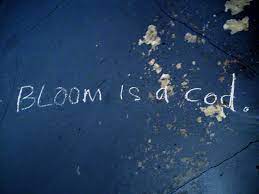
Haider Eid and Andy Clarno’s (2017) analyze Zionist apartheid as both a racialized and an economic regime; racial capitalism is central to understanding race and the question of Palestine relating to questions of land, labour and resources. Charisse Burden-Stelly (2020) theorizes US racial capitalism as “a racially hierarchical political economy constituting war and militarism, imperialist accumulation, expropriation by domination and labour superexloitation…and permanent war” (cited in Alana Lentin 2021), all key components of the Zionist colonization of Palestine.
While Clarno (2017) focuses his analysis of post-apartheid South Africa and post-Oslo Palestine/Israel on the neoliberalization of apartheid, racial capitalism was integral to Zionism since its inception, even though many founding Zionists saw themselves as socialists. The colonization of Palestine involved several aspects of racial capitalism including the judaization of Palestinian lands by the Zionist movement since the early twentieth century, and the segmentation of labour from the Zionist Conquest of (Hebrew) Labour policy (Shafir 1989) to the current reliance on cheap and dispensable Palestinian labour. I would also like to posit Israel’s racialized justice system and prison industrial complex and white European Jewishness as property as further aspects of racial capitalism. As David Lloyd and Patrick Wolfe (2016, 116) write, “to the extent that Israel’s regime in Palestine recapitulates and extends earlier models of settler colonial dispossession and domination, its function as a program for contemporary state forms not only supplies new technologies and practices of regulation and segregation but also highlights the continuities between the logics of settler colonialism and those of the neoliberal state globally” (cited in Turner, forthcoming).
The racialization of land
According to Cedric Robinson (1983), racial capitalism is a suitable framework for highlighting central concerns of Indigenous peoples under settler colonialism, as the centrality of land fits with the emphasis in racial capitalism on dispossession, exploitation and extraction. Although the Zionist project was not primarily driven by economic considerations of profit and resource exploitation, Patrick Wolfe (2016) speaks of “purchase by another means” as the modus of Zionist colonization.
According to Wolfe (2016, 22), Eurocolonial powers arrived in Native country ex nihilo condensing power and expanding violence, and this pre-formedness, relatively resistant to local determinations, is colonalism’s preaccumulation, which is different from the European experience of primitive accumulation that figures in Eurocentric Marxist historiography. In arriving in Native country, capitalism already contained its own global preaccumulations, such as enslaving Africans in the Americas and purchasing, seizing and depopulating value-added Native land in Palestine. Insisting that “imperialism is not the latest stage of capitalism but its foundational warrant,” Zionism, Wolfe writes, consciously avoided confinement to a single metropolis in favour of a “collective mother country” (Rodinson 1973, 76), purchasing Native land in conformity with the law of the current imperial power. Brenna Bhandar (2018, 2) argues that property law, a crucial mechanism for the colonial accumulation of capital, and racial subjectivity developed in relation to one another, along racial regimes of ownership. Importantly, Wolfe (2016, 211) argues, Zionism’s diffuse metropolis and Jewish land purchases in Palestine were linked in that the former financed the latter.
In 1901 the Zionist movement’s main institutional structure, the World Zionist Organization (WZO), founded the Jewish National Fund so as to extend Jewish land ownership in Palestine (Wolfe 2016, 224). Zionist land purchasing strategies attached usufruct – the right to enjoy the use of another’s property – to title, so that (Palestinian) vendors might sell a right that might not have been theirs to sell (Wolfe 2016, 231). The dual aim of the Zionist purchasing methods was “to acquire the greatest amount of land with the smallest number of Palestinians and to concentrate the greatest number of Palestinians onto the smallest amount of land” (Erakat 2015, 85). By 2007 the JNF, a donation-based organization that green-washes its racialized land purchases by having planted millions of trees, built dams and reservoirs, developed many acres of land and established parks and nature reserves, owned 13 per cent of the total land in Israel (About JNF, n.d.), 80 per cent of which is owned by the state and managed by the Israel Land Authority. Half of these lands are controlled by the IDF and the security services (Shiefer and Oren 2008), facilitating the ongoing demolition of Palestinian houses and villages, and the expulsion of Palestinian citizens from their lands (see e.g., Boxerman 2022). Many JNF forests, where European conifers displaced native trees, were used to cover the ruins of depopulated Palestinian villages, making the JNF a key technology of Zionist colonization and racialization (Cohen and Gordon 2018).
Key to Israel controlling Palestinian lands is the 1950 Absentee Property Law that enabled the state of Israel via the Custodian of Absentees’ property to take charge of lands, houses, bank accounts and movable properties belonging to Palestinians expelled after 29 November 1947 (Adalah 2017). As most land in Israel is either state- or JNF-owned, a major effect of racial capitalism on Jewish property and Palestinian deprivation is the prohibition of purchasing or leasing land by Palestinian citizens and occupied subjects (Safian 1997).
Continue reading “Notes on Racial Capitalism and Palestine: Land, Labour and Jewishness as Property”



You must be logged in to post a comment.